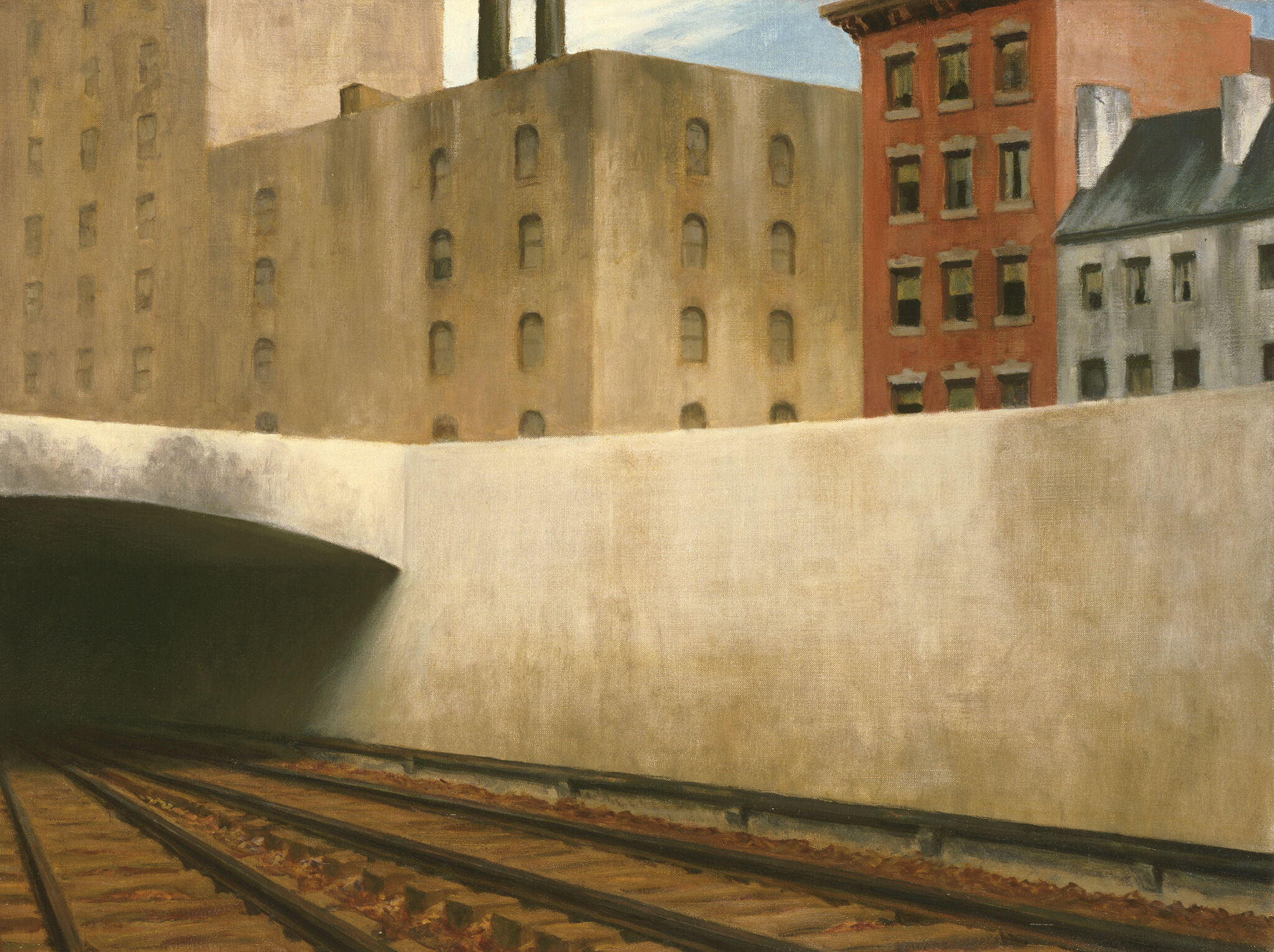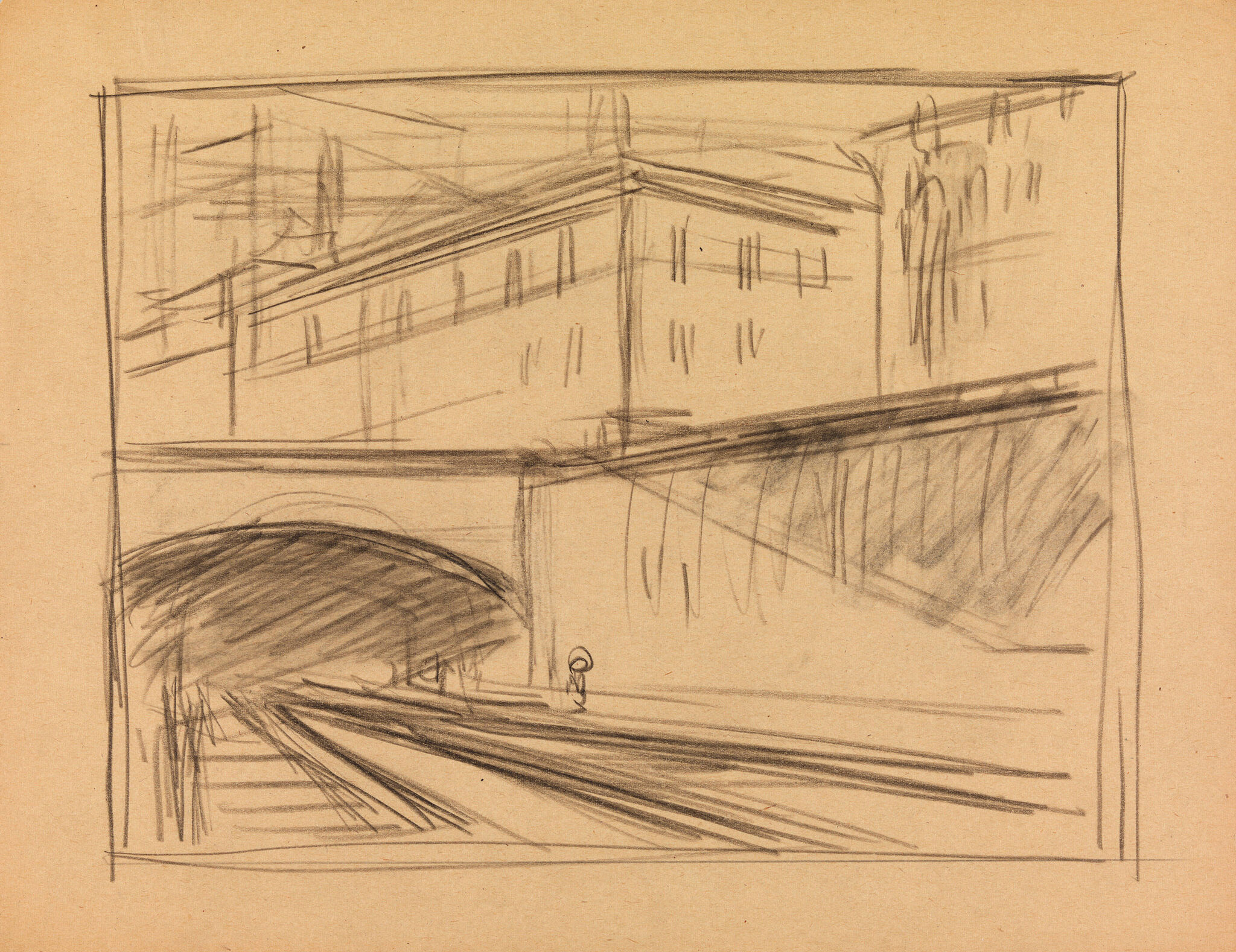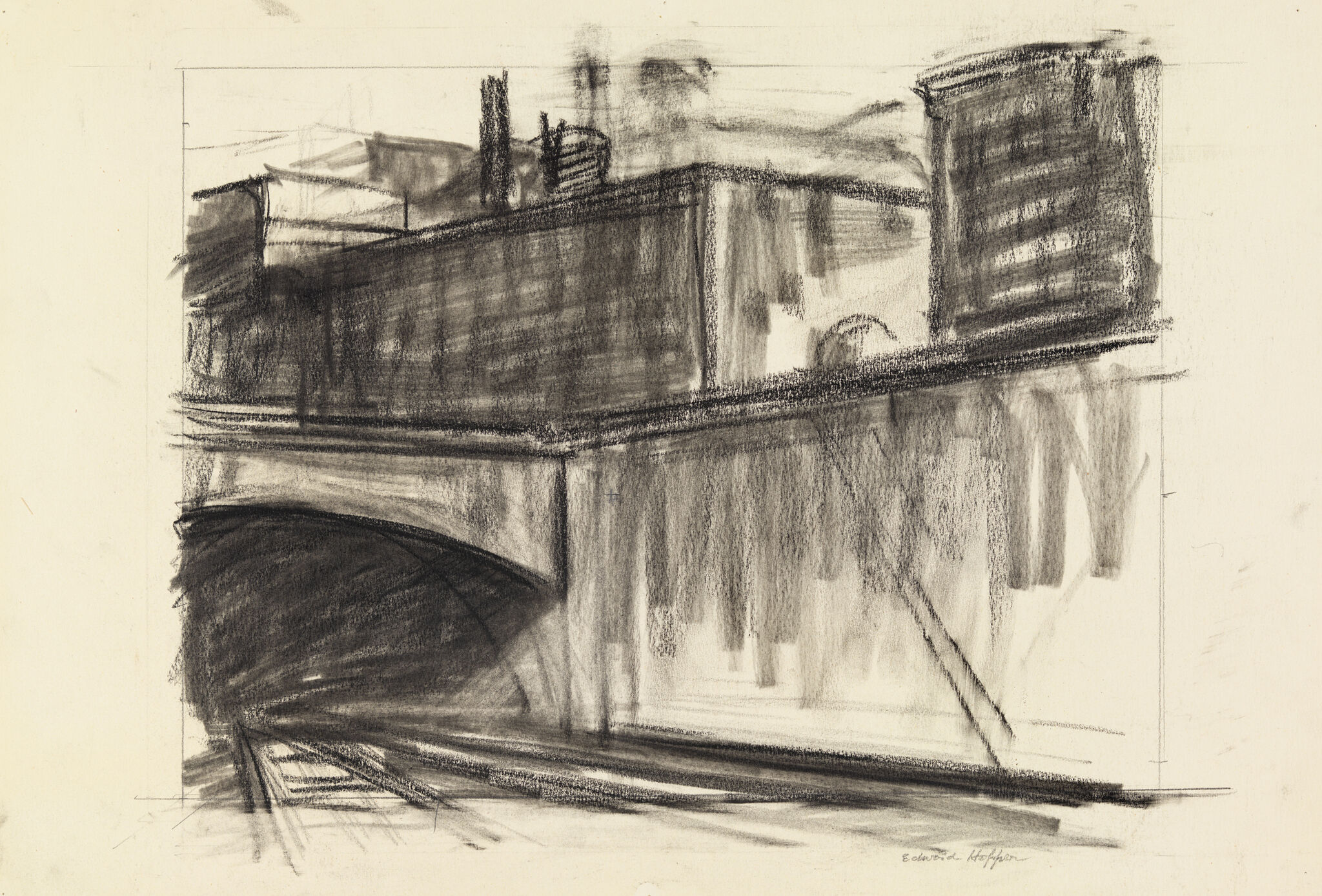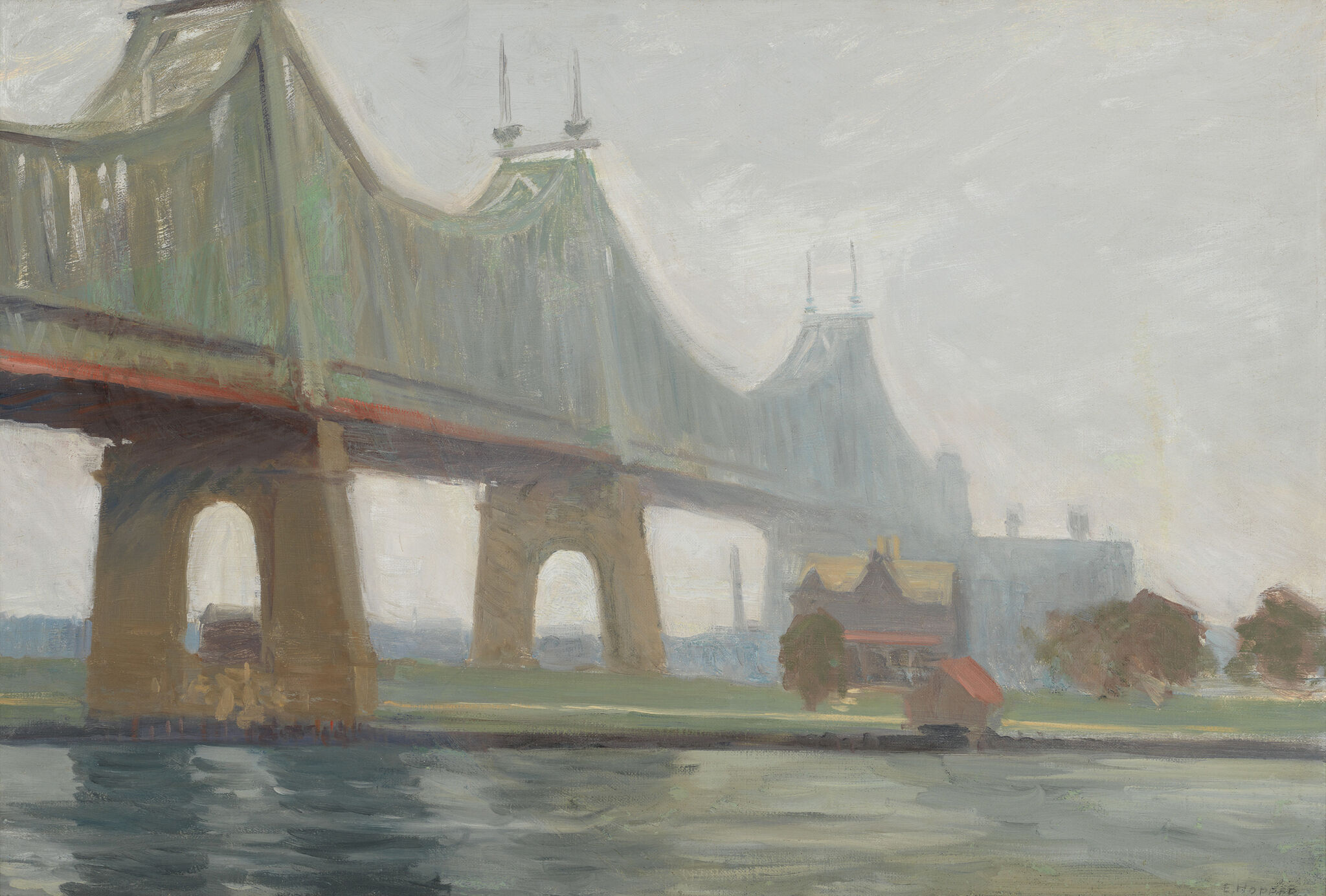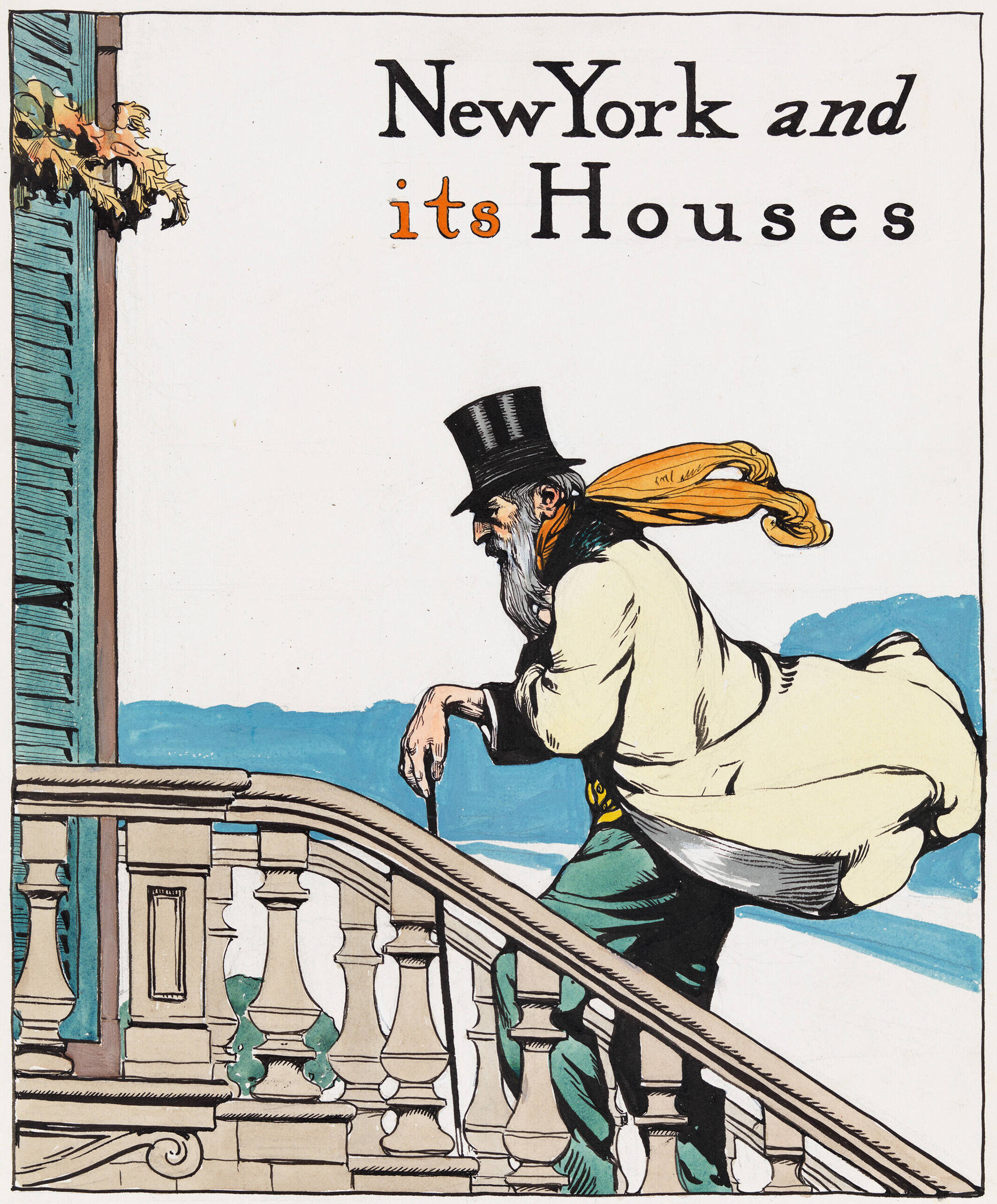NYC: First Impressions
New York City played an important role in Hopper’s life. When he was a child, he would take day trips with his family to New York City to travel to attend the theater. Starting in 1899 when he was seventeen, he began commuting by train and ferry to study art. His rides on the elevated “el” train and the hours spent sketching on the city streets left lasting impressions on the young artist. Hopper’s fascination with the urban environment remained throughout his life.
Hopper professed in an interview, “Well, I've always been interested in approaching a big city in a train, and I can’t exactly describe the sensations, but they’re entirely human and perhaps have nothing to do with aesthetics. There is a certain fear and anxiety and a great visual interest in the things that one sees coming into a great city...” The site Hopper depicts in Approaching a City is East 97th Street and Park Avenue, where the commuter rail goes from above ground to underground as it nears Grand Central Station. Prior to painting it, he made onsite preliminary sketches of the concrete retaining walls, which run along the sunken track that still exists today. Though this might appear to be a straightforward and unemotional depiction of a particular city location, Hopper described that his intention in painting was to “project upon canvas my most intimate reaction to the subject as it appears when I like it most; when the facts are given unity by my interest and prejudices.”
Throughout his professional career, Hopper spent countless hours walking the streets of New York City, filling his sketchbooks. For Hopper, New York was “the American city that I know best and like most.” By 1946, he had perfected the habit of drawing onsite then returning to his studio to paint. Rather than representing iconic landmarks and imagery throughout the city, Hopper instead chose commonplace structures and out of the way places. Made in January 1946, these two studies for Approaching a City highlight his skills both drafting fully rendered and schematic drawings. He used these sketches as source materials for composing his resulting painting.
In a letter written while traveling in Paris, Hopper compared the beauty of the city to “the raw disorder of New York”. Though his residence at 3 Washington Square North was his longest, Hopper lived in two other places within the city first: these homes included a studio at 244 West 14th Street and then an apartment at 53 East 59th Street. While living on 59th Street, Hopper depicted the Queensborough Bridge and Blackwell’s Island, now Roosevelt Island, which would have both been visible from his apartment. The bridge connecting Manhattan and Queens had only been opened to traffic in 1909. Its opening coincided with that of the Manhattan Bridge and followed the Williamsburg Bridge’s creation in 1903. Queensborough Bridge focuses on the bridge’s support structures and breadth. In the following decades, Hopper would create numerous works of art depicting bridges. Infrastructure would become a recurring subject of Hopper’s paintings. “To me,” Hopper wrote, “the most important thing is the sense of going on.”
Hopper entered the commercial art field in 1906, taking an advertising job with the American illustrator Coles Phillips (1880-1927). Between 1906 and 1925, he worked as a freelancer for several New York advertising agencies and magazines. He made illustrations for everyday products and services and was hired to illustrate stories and articles for popular magazines. Hopper’s work was also often reproduced in trade journals. New York and its Houses illustrates the artist’s dynamic perspective of an easily-overlooked scene: a man ascending a city building’s front staircase. Despite his success as an illustrator, Hopper did not enjoy commercial work. Later in life he described his feelings about looking for commercial work: “Sometimes I’d walk around the block a couple of times before I’d go in, wanting the job for money and at the same time hoping to hell I would not get the lousy thing.”
Activities
How would you represent unseen New York?
Commuter train sunken tracks, bridge support structures, even fire hydrants, were among the subjects that Hopper chose to draw onsite in New York. The artist even claimed, “anything will make a good composition.” Have students talk about the everyday scenes and objects that represent New York City to them. Challenge them to think of images that do not include more well-known landmarks and views but still communicate that it is New York. Have them create their artworks in the medium of their choice. Exhibit the artworks and encourage students to reflect on their unique city perspectives.
How would you introduce others to a new place?
Have students discuss their experiences when first visiting a new place. What sights, sounds, scents, or feelings did they notice upon arrival? How did their impressions change as they explored these sites? Then, ask students to imagine they are travel writers. Have them write a travel article, essay, or blog entry introducing a new city, town, neighborhood or community to readers. After sharing each other’s works, invite students to discuss their new understanding of their peers’ selected places.
How would you depict the sensations of arriving at a new site?
Hopper wrote, “To me, form, color and design are merely a means to an end, the tools I work with, and they do not interest me greatly for their own sake. I am interested primarily in the vast field of experience and sensation...” Invite students to remember their sensory experiences and feelings upon arriving at a new place. Ask students to create an artwork that depicts their sensations. Display the works and encourage them to discuss how these artworks might have differed if the assignment had simply been to draw the architecture of a new place.
How could you communicate your surroundings?
Between about 1906 and 1925, Hopper had an almost twenty-year successful career as a commercial artist and illustrator. Have students imagine they are editors of a new magazine dedicated to their borough, community, or neighborhood. Ask them to come up with a name for their publication and decide what their first issue will focus on. Encourage them to discuss how their magazine covers will best illustrate their subjects and particular points of view. Invite them to make their cover art and write articles for their magazines.
Additional Resources
Whitney Museum: Essay, “Approaching a City: Hopper and New York” by Steven and Ann Ames Curator of Drawings and Prints, Kim Conaty.
National Gallery of Art: Slideshow of Hopper’s early works

